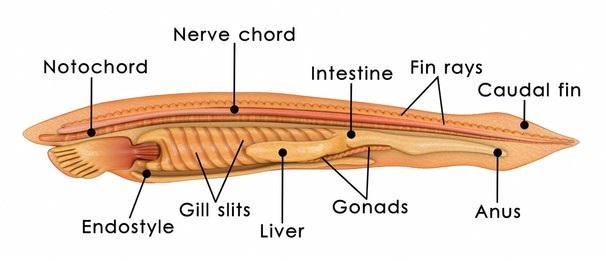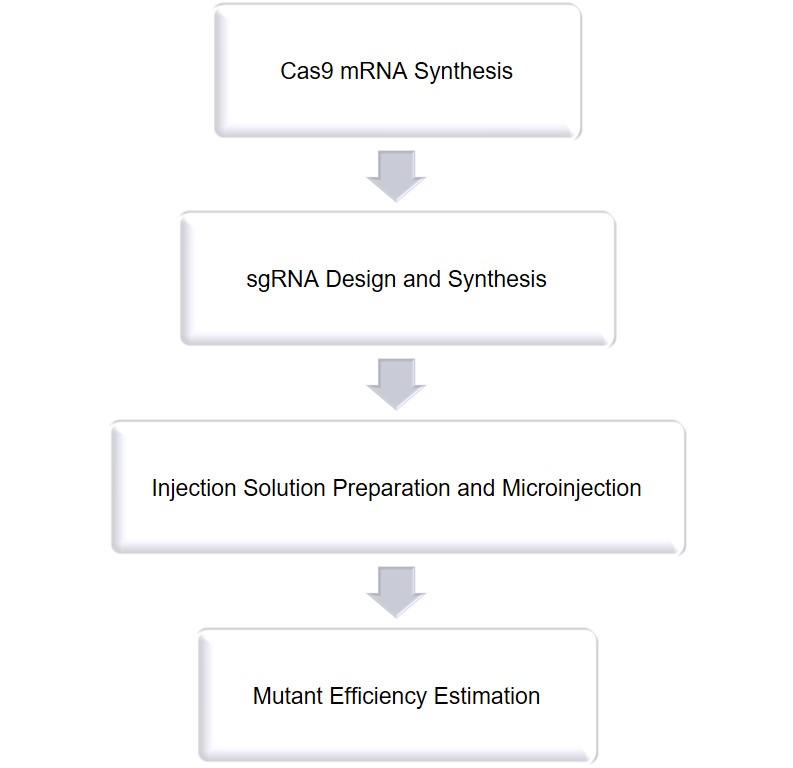Amphioxus (Branchiostoma lanceolatum) belongs to the Chordata, Leptocardii, and is similar to the distant ancestors of vertebrates, and is known as a "living fossil" and is a model species for studying the origin and evolution of vertebrates. There are about 30 species of amphioxus in the world, among which B. floridae, B. japonicum, B. belcheri, etc. have been studied more frequently, and B. floridae is also the first amphioxus with whole-genome data.
 Figure 1. Schematic diagram of the body structure of Amphioxus.
Figure 1. Schematic diagram of the body structure of Amphioxus.
Amphioxus has many other organs homologous to vertebrates, such as the pulse abdominal aorta, the arterial arch, and the hepatic blind capsule, showing an early stage of vertebrate organ development. The evolutionary position of amphioxus and its carapace structure is consistent with the requirements of a new model animal. In addition, its small size, translucent carapace, and in vitro fertilization development are favorable conditions for use as experimental animals. Therefore, amphioxus is a very ideal model animal for evolutionary developmental biology, comparative and functional genomics, etc.
Lifeasible provides amphioxus gene-editing technology services, you can use our existing system to perform gene function studies, etc.
CRISPR/Cas9 technology services

Lifeasible has introduced the CRISPR/Cas9 system for the efficient induction of targeted mutations in amphioxus.
The integrated and diverse genome editing platform Lifeasible have built for amphioxus can provide our customers with the possibility to study amphioxus gene functions. We are known for our stability and efficiency, and we will always let our customers enjoy the best technical service and get the most credible experimental results. For more information or any inquiry requirements, please contact Lifeasible.
Reference